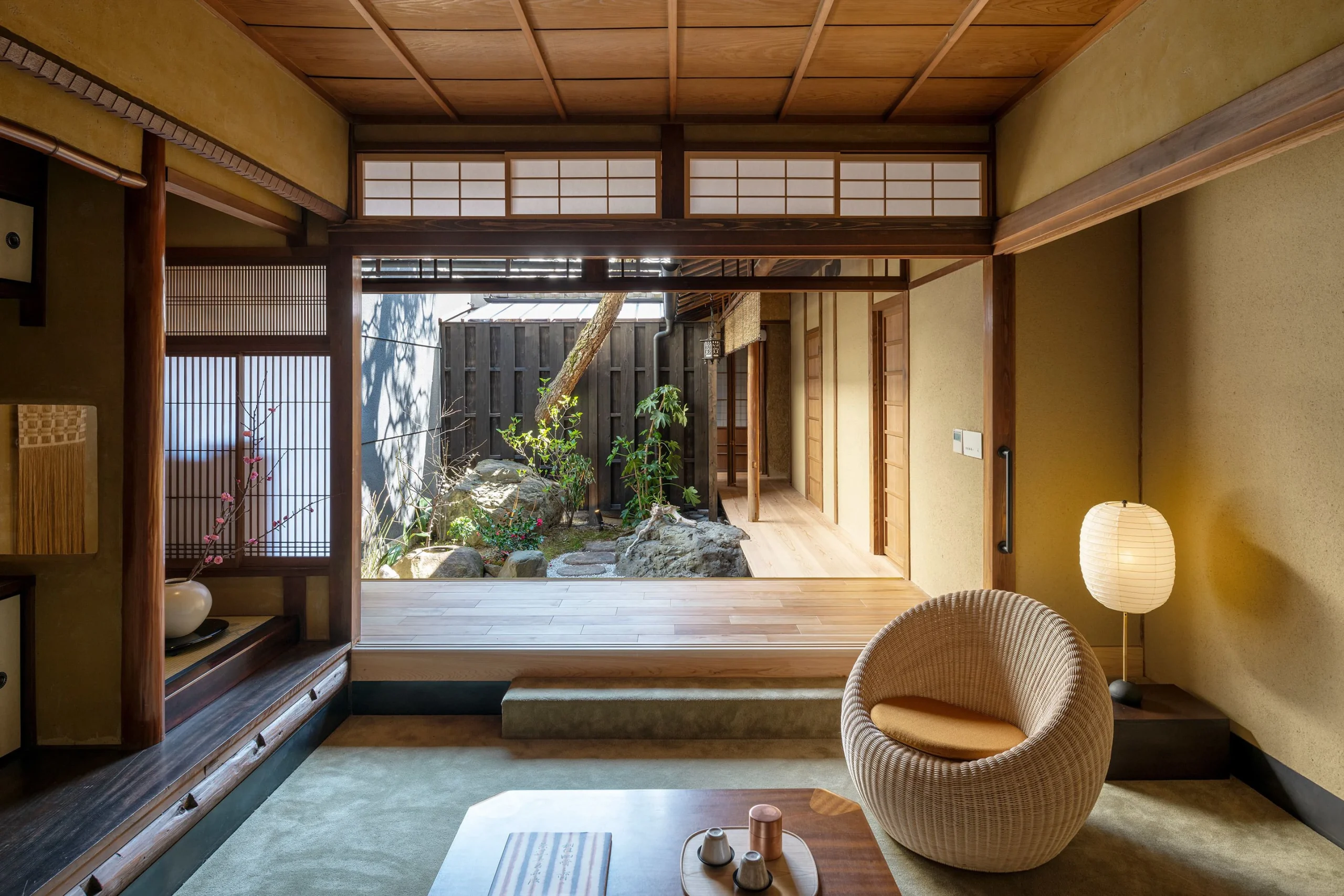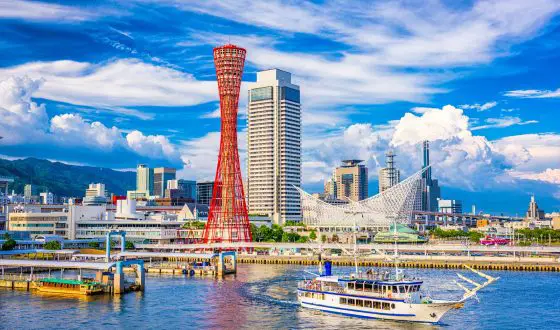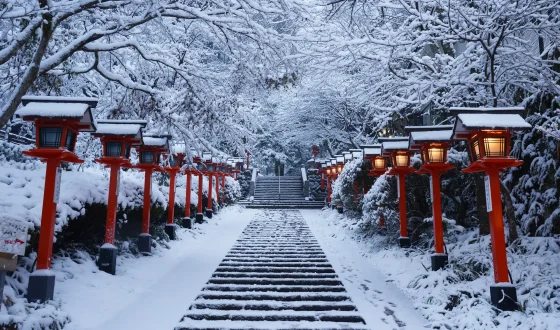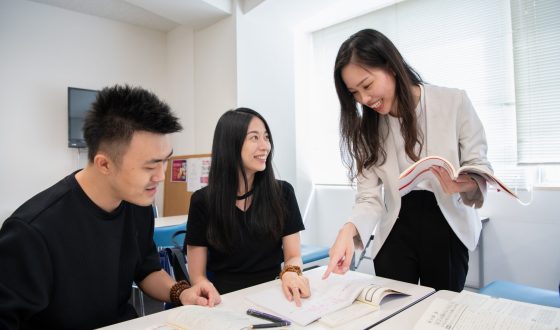10 Best Ryokan In Japan: Best Places for International Visitors
Looking to unwind when visiting Japan? The ideal place to stay and enjoy the best in Japanese hospitality is a traditional Ryokan in Japan! The bed & breakfast, inn, and hot spring resort all come together to create a rustic, peaceful setting with delectable meals and cozy accommodations. Choosing any of the best Ryokan in Japan listed in this post is a safe option if you’re not sure where to stay.

Ryokan in Japan (Source: Internet)
Introduction: What is Ryokan in Japan?
History
While many ryokans have evolved over the years to meet modern expectations for comfort, many continue follow the ancient ryokan practices of giving guests with the barest essentials.
It might surprise you to learn that ryokans have existed since the Keiun era of the eighth century, when the earliest known one, the Nishiyama Onsen Keiunkan, opened its doors in 705 AD.
Some of them were constructed beside congested roads with the intention of helping travelers. People frequently slept outside when traveling across Japan in the past since technology and transportation were either nonexistent or extremely primitive. However, this caused a variety of issues, which is why ryokans were invented.
They usually had a tatami-matted room, shared bathrooms, and not many other places where guests could wear the yukatas that the Ryokan provided.
Traditional Features
Ryokans are very different from hotels in a number of ways. In this essay, we’ll go over some of the classic fundamentals.

Ryokan (Source: Internet)
The simple tatami mat that covers the ground of your room is one of the largest distinctions between hotels and a must-have for a ryokan. Since shoes are not permitted inside ryokans, unlike hotels, you must exchange your shoes for indoor slippers that the ryokan provides. On the tatami mats, feel free to stroll about in your socks or bare feet!
In most ryokans, wagashi (Japanese sweets) are placed on the table, and your host will make some tea for you to sip. Almost all ryokans will have a wonderful set of yukatas ready for you and your guests when you arrive, keeping with the traditional way of dressing.
The onsen is one of the most important aspects of a ryokan; without one, it would nearly be lacking. One of the most soothing experiences you can have in Japan is visiting an onsen, a natural hot spring where people may unwind. The communal onsens in older-style ryokans often contain one or two separate onsens for each gender.
The fantastic food—known as kaiseki cuisine—that you will be dining on is another important aspect of ryokans. Kaiseki, for those who don’t know what it is, is a traditional multi-course supper that is regarded as the pinnacle of Japanese dining.
The Most Popular Ryokan in Japan
1. Gora Kadan

Gora Kadan (Source: Internet)
Few Japanese ryokans, if any, can match Gôra Kadan’s repute. It served as a branch of the Imperial family’s summer home before becoming a stunning old-meets-new refuge with well-kept gardens, a fantastic onsen, and expansive views of the nearby Fuji-Hakone-Izu National Park.
While it is currently associated with the European hotel chain Relais & Châteaux, everything about the establishment, from the décor to the cuisine, is characterized by Japanese elegance, subtlety, and perfection.
For those who want to increase their level of relaxation even further, there is a spa available.
- Location: 1300 Gora, Hakone-machi, Ashigarashimo-gun, Kanagawa 250-0408
- Map: Google Maps
- Check in: 3 PM
- Check out: 11 AM
- Website: https://www.gorakadan.com/?lang=en
2. Shiraume

Shiraume (Source: Internet)
The Gion district of Kyoto is home to one of the most picturesque and ancient neighborhoods in the city, where the Shiraume Ryokan is situated. Gion is still very much a world that is alive with charms, secrets, and classic elegance, both during the day and at night.
Shiraume is a beautiful ryokan that dates back to the Edo Period (1603 – 1868) and is nestled away on a historic route near to the Shirakawa River.
It began as a tea room and soon expanded into a whole ryokan for tourists. It is still one of the most well-liked ryokans in Kyoto today, and thanks to the excellent service and delectable cuisine supplied in your room, many guests who stay here just once return on consecutive journeys.
- Location:78-6 Sueyoshicho, Higashiyama Ward, Kyoto, 605-0085
- Map: Google Maps
- Check in: 3 PM to 6 PM
- Check out: 11 AM
- Website: https://www.shiraume-kyoto.jp/english/
You might also like:
- Seasonal Afternoon Tea in Tokyo – The Best Locations to Go in 2023
- What Are Tokyo House Prices? Are They Really Expensive?
3. Zaborin

Zaborin (Source: Internet)
Despite having more than a thousand years of history and tradition at its core, ryokan in Japan nevertheless adapt to the needs of their guests. A prime example is this small, 15-villa resort in Hokkaido, the country’s northernmost island.
The Zaborin’s rooms come equipped with a minibar, a refrigerator, and air conditioning for the utmost comfort and convenience. Additionally, there is free internet available for guests.
Best of all, Zaborin makes it simple to visit some fantastic Kutchan-cho sights, such the well-liked Kutchan Natural History Museum.
- Location: 76-4 Hanazono, Kutchan, Abuta District, Hokkaido 044-0084
- Map: Google Maps
- Check in: 2 PM
- Check out: 11 AM
- Website: https://zaborin.com/
4. Hoshinoya Kyoto

Hoshinoya Kyoto (Source: Internet)
Hoshinoya Kyoto is situated in Arashiyama, a tiny village to the west of Kyoto City, in a remarkably picturesque area on the bank of the Katsura River. The hotel’s remote setting will give you the impression that you are staying in the mountains distant from the city, even though it is just a little more than 40 minutes from Kyoto Station.
Although bookings at Hoshinoya might be difficult to come by (and extremely expensive), you can be sure that your stay there will be one to remember. Hoshinoya is known as one of the best ryokan brands in Japan.
Enjoy the ryokan’s first-rate meals, tastefully appointed bathrooms, and stunning natural surroundings in this peaceful area of Kyoto.
- Location: 11-2 Arashiyama Genrokuzancho, Nishikyo Ward, Kyoto, 616-0007
- Map: Google Maps
- Check in: 3 PM
- Check out: 12 AM
- Website: https://hoshinoya.com/kyoto/en
5. Wakakusa no Yado Maruei

Wakakusa no Yado Maruei (Source: Internet)
Wakakusa no Yado Maruei is a great ryokan to take into consideration if you’re traveling to the region surrounding Mt. Fuji and Lake Kawaguchi.
Maruei maintains the superb food and exceptional service one would anticipate from a traditional ryokan while being bigger than many of the others on this list.
The hot spring facilities, however, have to be the outstanding feature. This ryokan in Japan features a variety of indoor and outdoor bathrooms with lovely timber finishes. When the weather is fine, several of the baths even provide breathtaking views of Mt. Fuji, providing for a really unique hot spring experience.
- Location: 498 Kodachi, Fujikawaguchiko, Minamitsuru District, Yamanashi 401-0302
- Map: Google Maps
- Check in: 2 PM to 6 PM
- Check out: 8:30 AM to 11 AM
- Website: https://maruei55.com/
6. Hoshi

Hoshi Ryokan (Source: Internet)
The same family has managed the affairs of this amazing ryokan for no less than 46 generations, making it the second-oldest hotel in the world as of today.
Having welcomed visitors since the early 8th century, it continues to place a strong emphasis on omotenashi, the distinctive hospitality that helps characterize ryokans.
Around the Japanese garden are four wings joined together in a diamond shape. Spring, Summer, Fall, and Winter are the names of the four seasons that each wing is named after. Discover the real Japan while appreciating the distinctive manifestations of each season.
It boasts a Japanese garden, delicious cuisine, traditional rooms designed in accordance with the seasons, and a historic onsen that was established more than 1,300 years ago by the monk Taicho Daishi.
- Location:923-0326 Ishikawa, Komatsu, Awazumachi
- Map: Google Maps
- Check in: 3 PM
- Check out: 10 AM
- Website: https://www.ho-shi.co.jp/en/
7. Shima Onsen Shunmokutei Nakazawa

Shima Onsen Kashiwaya Ryokan (Source: Internet)
Shima Onsen, one of the renowned hot spring regions close to Tokyo, is situated in the Gunma Prefecture, a hilly region in central Japan.
Kashiwaya Ryokan, one of its numerous ryokan, is a superb location for an onsen retreat in the highlands and is tucked away in the Shima River Valley.
The ryokan’s accommodations are roomy, and the several hot spring tubs provide breathtaking views of the landscape beyond. Shuttle buses that run frequently to the nearby railway station make it simple to reach the ryokan.
Even those without a car will find it simple to travel around because it provides rental bicycles for visitors to experience the surrounding area’s natural beauty.
- Location: 4238-41 Shima, Nakanojo, Agatsuma District, Gunma 377-0601
- Map: Google Maps
- Check in: 3 PM to 5:30 PM
- Check out: 8 AM to 12 PM
- Website: https://www.kashiwaya.org/e/
8. Luck You Kyoto

Luck You Kyoto (Source: Internet)
Luck You is a ryokan in the heart of Kyoto that is renowned for its very welcoming staff that goes above and beyond to ensure that each visitor has a wonderful stay.
The staff is not only welcoming, but they also speak English, making it simple for them to interact with visitors and offer advice on where to go in Kyoto.
The accommodations are all that one would expect from a ryokan, despite the fact that the rooms are a little on the tiny side. Additionally, visitors at the ryokan are welcome to utilize the baths across the street without charge.
- Location: 590-16 Kakimotocho, Shimogyo Ward, Kyoto, 600-8357
- Map: Google Maps
- Check in: 4 PM to 10 PM
- Check out: 7 AM to 11 AM
- Website: https://luckyou-kyoto.com/en/horikawagojo/
9. Toshiharu

Toshiharu (Source: Internet)
Toshiharu is a ryokan housed in a magnificent Meiji era building that is designated as a cultural asset, and it is situated on a peaceful side street not far from central Kyoto.
The ryokan rooms serve as your “home away from home,” including a flat-screen TV, air conditioning, and easy access to the internet via complimentary wifi.
The ryokan’s well-kept courtyard garden, which some of the rooms overlook and which helps you forget that you’re staying in the center of a city, is one of its best attractions.
Guests frequently remark that the traditional Japanese breakfast, which consists of a spectacular buffet of several little dishes, is the nicest meal they’ve ever eaten in Japan.
- Location: 326, Benzaiten-cho, Suwamachi-Matsubara-sagaru, Shimogyo-ku, Kyoto-shi, Kyoto
- Map: Google Maps
- Check in: 4 PM to 10 PM
- Check out: 6 AM to 10:30 AM
- Website: https://www.14haru.com/en/
10. Hoshinoya

Hoshinoya Tokyo (Source: Internet)
Hoshinoya Tokyo, a ryokan that is a member of the renowned Hoshino Resort chain, is located in Central Tokyo, which is arguably the last spot in Japan that you would anticipate to find a ryokan.
Hoshinoya combines the kindness and individualized experience you would expect from a ryokan with contemporary décor and amenities, more of a cross between a luxury hotel and ryokan.
Famous Tokyo sights like Tokyo Station and the Imperial Palace are just a few blocks from the ryokan entrance, and it’s easy to get anyplace else in Tokyo with just a short train journey from any of the local stations.
- Location: 1-9-1 Otemachi, Chiyoda City, Tokyo 100-0004
- Map: Google Maps
- Check in: 3 PM to 9 PM
- Check out: 12 AM
- Website: https://hoshinoya.com/tokyo/en/
Some things you should know about Ryokan in Japan
1. Don’t show up unannounced and early
The instant you enter a ryokan, your ryokan experience officially begins. It is customary for visitors to wait until they are invited inside before passing the initial entrance, or genkan.
Although each guesthouse has its unique check-in procedure, it is customary to offer visitors green tea, whether in the lobby or in their rooms.
The custom of settling down and taking a bath before supper is followed by visitors who check in often starting at 3 p.m.
2. Ryokan rules
While staying in a ryokan, it’s essential to keep in mind that this is a culture rich in tradition and custom. That implies that there are some standards for your behavior here. After all, the whole point of doing this is to experience a new culture, and that necessitates following the customs and procedures.
Many locations will really take the time to show you around before going through the ryokan’s regulations over tea.
The clothing you wear inside the ryokan is one of the easiest rules to understand. You’ll be provided a yukata to wear inside and outside the inn.
Most people will offer you slippers to wear indoors, but some people will also give you shoes to walk about in outside. Please be aware that wearing socks or going barefoot is only acceptable on the tatami mats.
3. Aware of the eating manner
In the past, ryokan served as both a lodging option for people passing through Japan’s roads and a restaurant for visitors. In keeping with that, the majority of ryokan will serve you supper and breakfast throughout your stay and include the meals in the cost of lodging.
Typically, evening meals are served about 6 or 7 o’clock. The dinner will either be provided in your room at certain ryokans or in the common dining area at others. Dinners are frequently kaiseki style — lavish, multi-course dinners — and are usually included in the fee.
4. Ask question
If you must leave the ryokan again in the evening for any reason, check beforehand as the doors are often secured rather early.
Around 8 a.m., breakfast is often served, and the usual fare includes fish, pickled vegetables, and rice. If this doesn’t seem good, you can typically find a straightforward Western-style substitute.
At any time throughout your stay at a ryokan, don’t be afraid to ask your hosts any questions if you have any doubts or concerns.
FAQs
1. Is Ryokan in Japan pricey?
There are several distinct types of ryokans, some of which are more costly than others. Expect to spend between 15,000 and 25,000 yen (112–187 USD) per person, each night, when traveling. There are both more expensive and less expensive Ryokans that fall within and outside of those price ranges, respectively.
2. What distinguishes a Ryokan from an Onsen?
A ryokan is a type of traditional lodging that offers both traditional eating and a place to sleep, much like a hotel. However, not all of them may be located in the vicinity of hot springs. The hot springs and the buildings that surround them are referred to as onsens.
3. Are Ryokans more affordable than hotels?
There are fewer ryokan in major cities like Tokyo and Osaka since they are often more costly than a standard “business hotel” in Japan. However, given how little the average Japanese business hotel is, you might appreciate the added space provided by a ryokan.
4. Are there private bathrooms at ryokans?
For individuals who prefer to wash alone or simply want a little more intimacy with their lover, many ryokans now provide the option of utilizing a conventional bathroom privately (upon reservation). Some ryokans at a higher level also have rooms with a complete private bathroom inside the room, complete with a shower or bathtub.
5. What is the ideal Onsen session duration?
At most, 1-2 times per day are allowed for bathing, and after becoming acclimated to onsen, 2-3 times per day is permitted. The length of a bath depends on the temperature of the water, but it should normally last 3 to 10 minutes at a time. If you become used to it, you may extend it to 15-20 minutes.
Conclusion
More than simply a place to spend the night, Ryokan provide a variety of services. The majority provide a full-service Japanese dining experience in addition to the hot springs, traditional Japanese attire, and in-room dining.
Use the best Ryokan in Japan as your home bases as you tour the neighborhood or stay there to unwind. No matter where you decide to go in Japan, the Ryokan you pick will probably end up being one of your finest travel memories.









